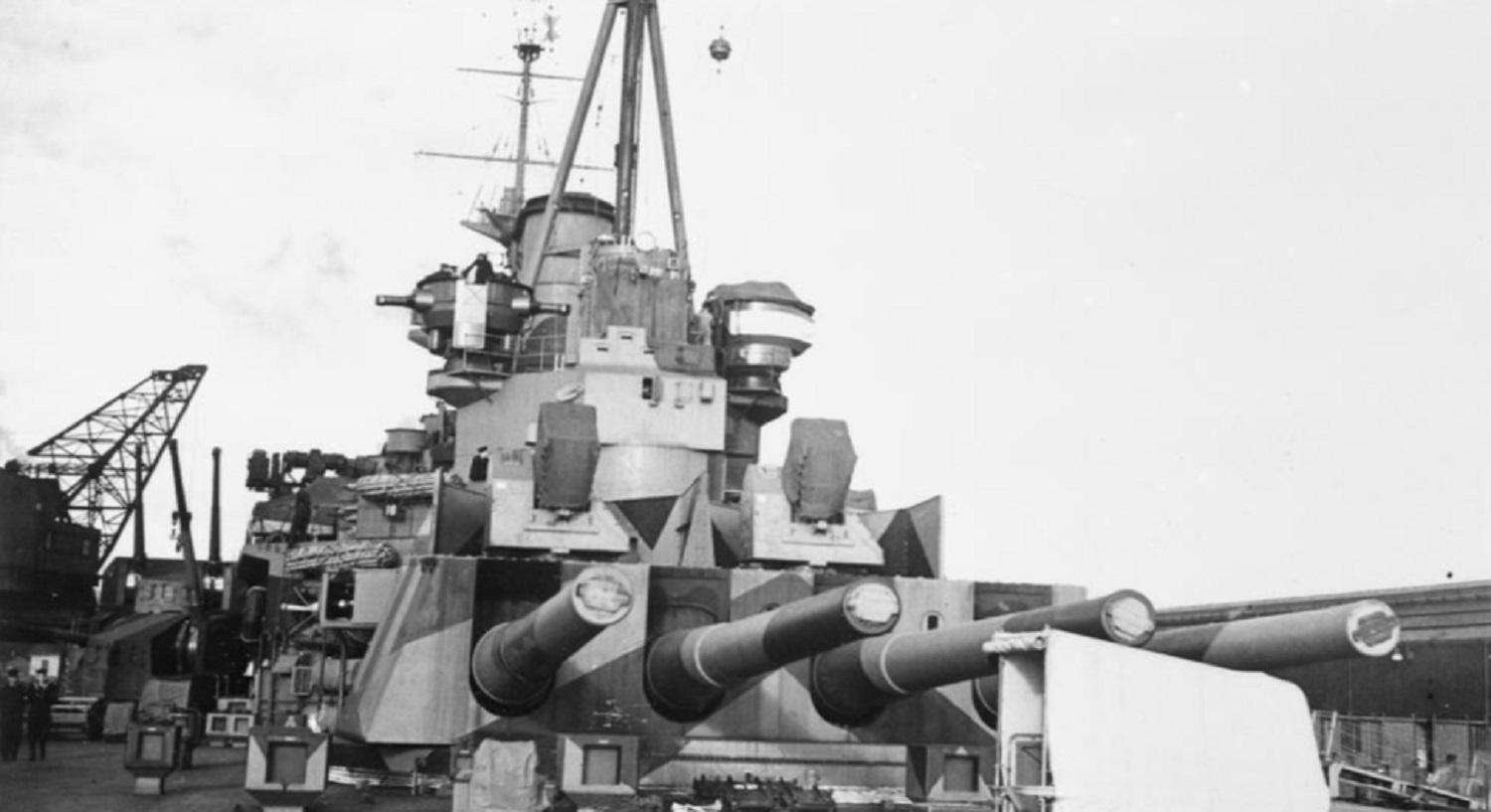In the late 1930s the British saw a need for an intermediate, close-range AA weapon to supplement their 2-pdr AA guns. The UP Mark I was one of the small rocket weapons designed to meet this need and was employed on many large British warships early in World War II.
UP stands for "Unrotated Projector." "Unrotated" meant that the barrel did not have any rifling, i.e., the projectile was not spin-stabilized. Each emplacement was a set of twenty smooth-bore tubes, usually fired ten at a time. Cordite was used to ignite ("Project") a 3-inch (7.62 cm) rocket motor which propelled the fin-stabilized 7-inch (17.8 cm) diameter Parachute and Cable (PAC) rockets which carried a 8.4 oz (238 g) mine. When the rocket reached approximately 1,000 feet (330 m), it exploded and put out the mine which was attached to three parachutes by 400 feet (122 m) of wire. The design concept was that if a plane hit the parachutes or the wire, it would then pull the mine into itself.
These UP projectiles were kept in ready lockers close to the projectors. The sinking of HMS Hood showed that these stored weapons were rather flammable. They were also found to be an almost totally ineffective weapon, as the barrage took too long to establish and was easily avoided. In addition, reloading was slow and the mines showed an alarming tendency to drift back onto the firing ship. For these reasons, the UP was gradually replaced on surviving ships with the British 2-pdr and the Oerlikon 20 mm guns. For example, shortly before she was sunk by the Japanese, HMS Prince of Wales had all three of her UP emplacements replaced with 2-pdr mounts.
Other information: The rockets were 32 inches (81.3 cm) long and weighed 35 lbs. (15.9 kg). The effective horizontal range was 3,000 feet (910 m) and the parachute sinking speed was 16 to 23 fps (5 to 7 mps). The 20-tube mounting weighed about 4 tons (4 mt). There was also an exercise rocket that did not have a warhead.
| Capital Ships | Hood (5), King George V (3), Prince of Wales (3), Nelson (4) and Barham (1) |
|---|---|
| Cruisers | Aurora (1), Birmingham (1), Glasgow (2), Newcastle (2), Norfolk (2) and Sussex (2) |
Approximately sixty 20-round mountings were made. The last two major ships fitted were the "Town" class cruisers HMS Newcastle and HMS Birmingham. Almost all of these UP mountings were removed in 1941 and replaced with octuple 2-pdr mountings and single Oerlikon 20 mm guns.
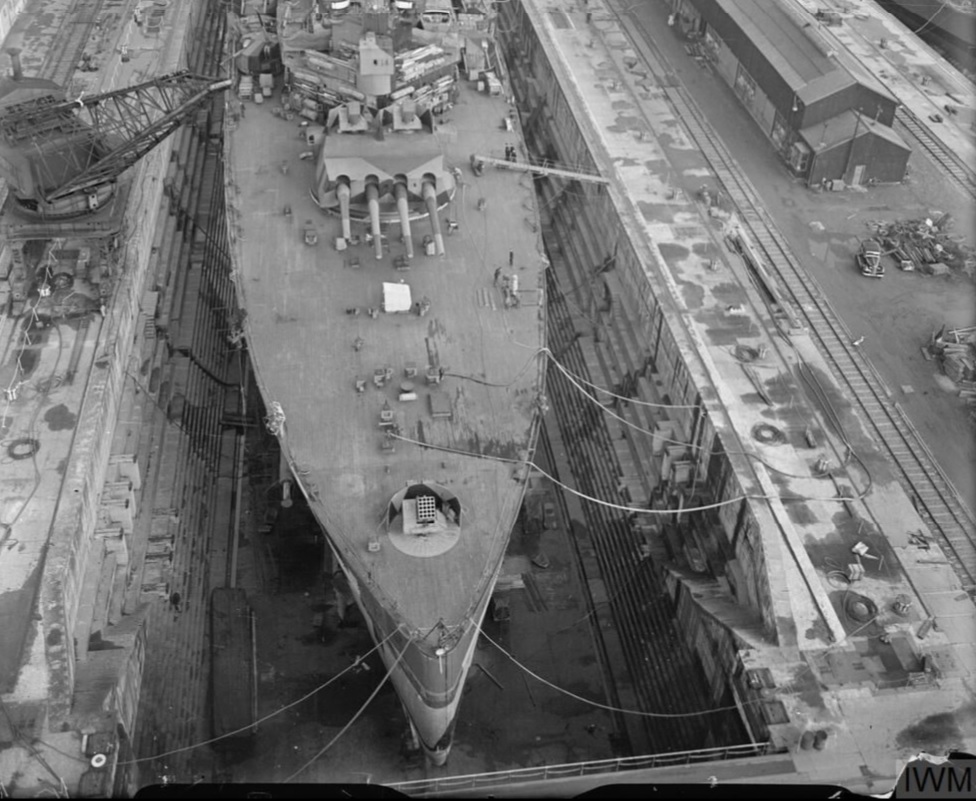
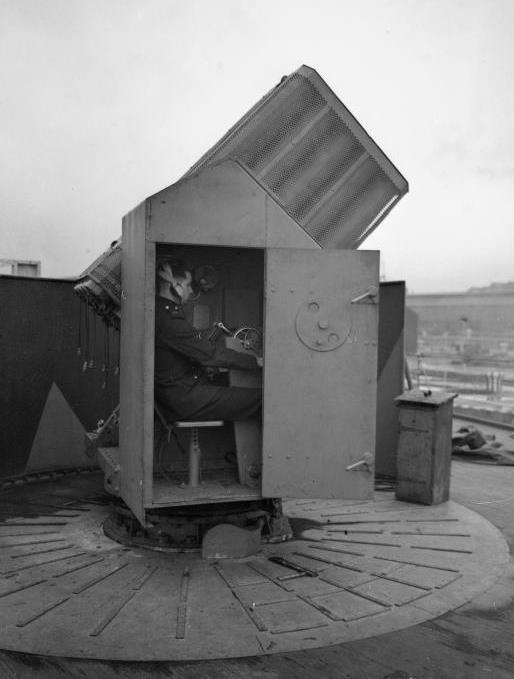
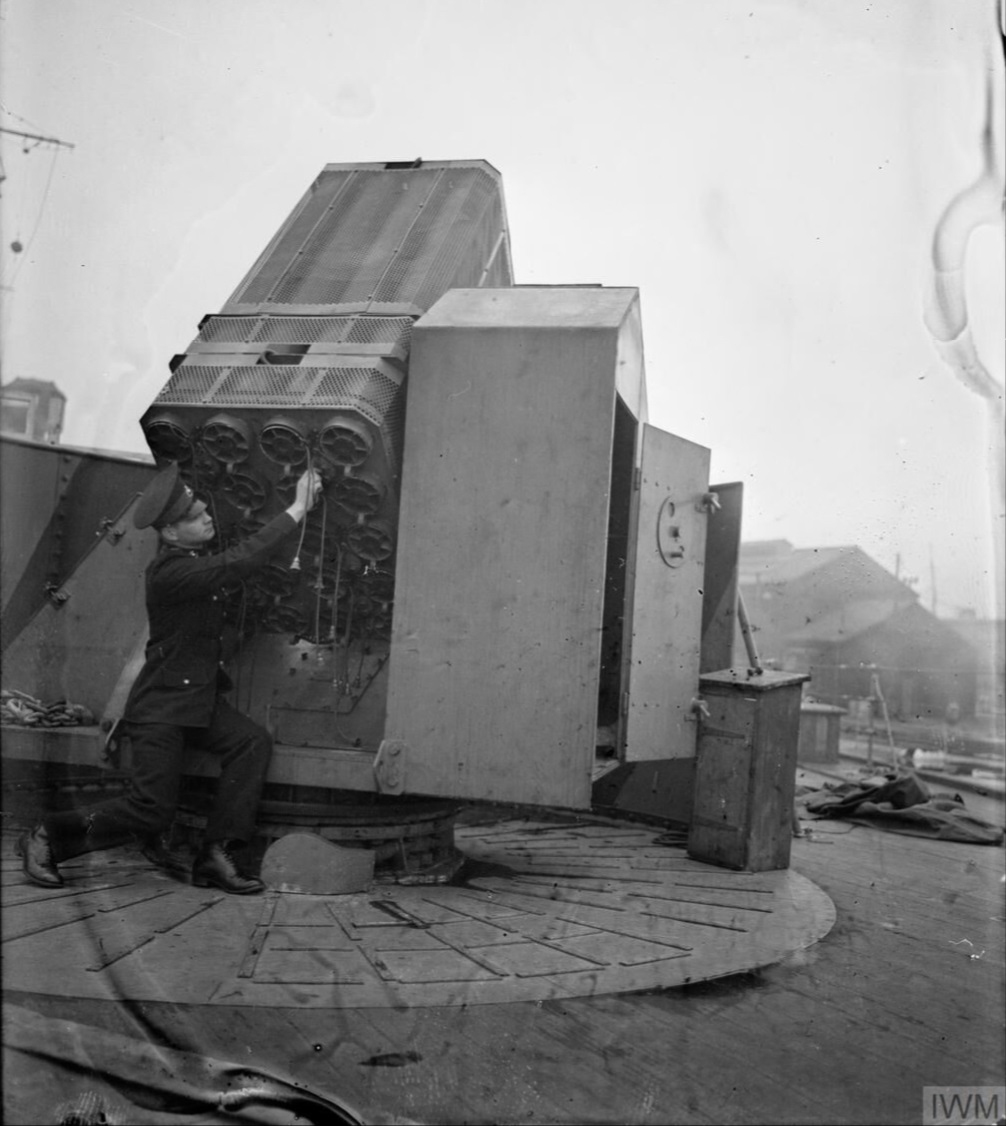
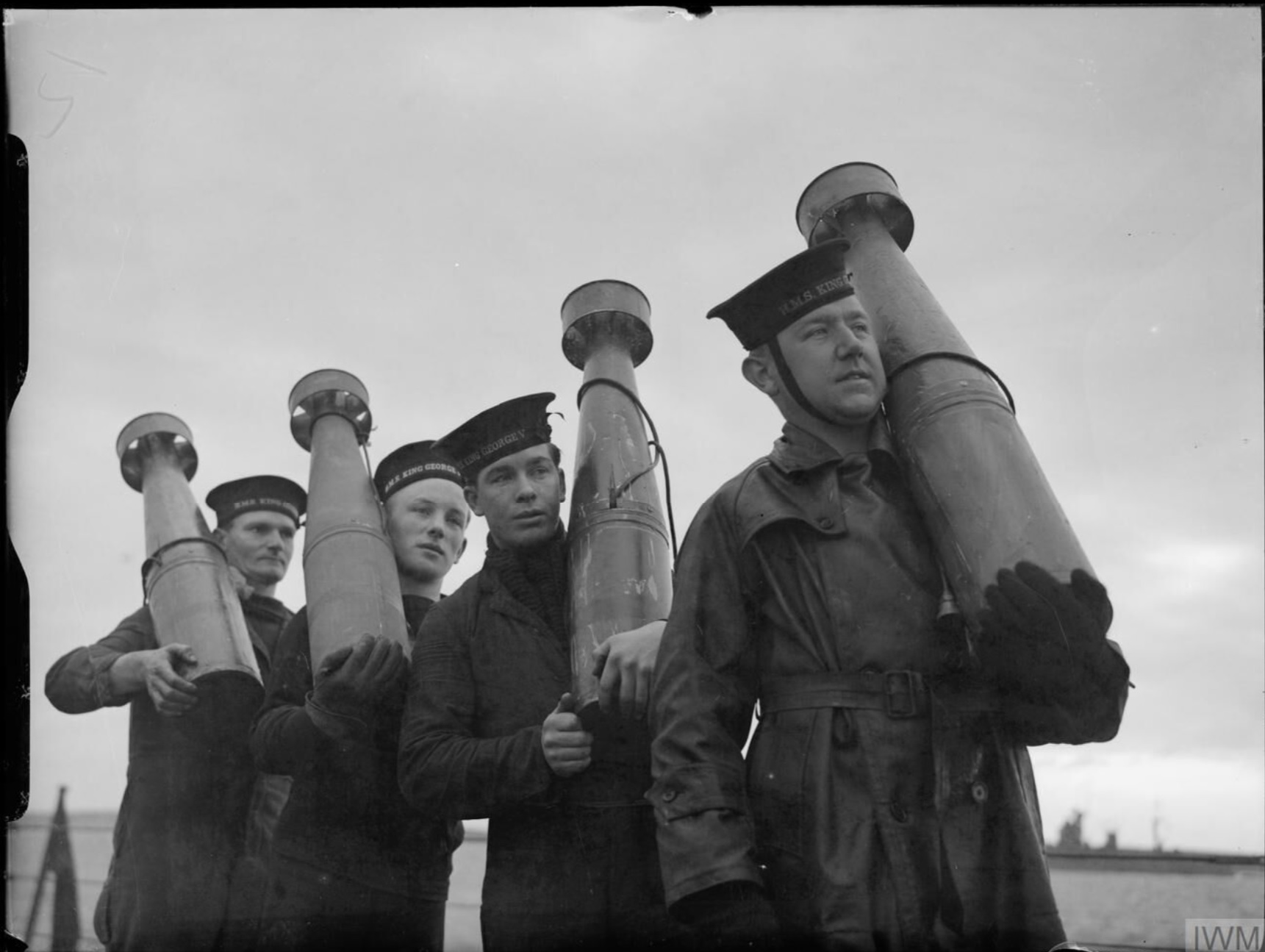
"Naval Weapons of World War Two" by John Campbell
"Battleships: Allied Battleships in World War II" by W.H. Garzke, Jr. and R.O. Dulin, Jr.
"Anatomy of the Ship: The Battlecruiser Hood" by John Roberts
"British Battleships of World War Two" by John Roberts and Alan Raven
"British Cruisers of World War Two" by John Roberts and Alan Raven
05 September 2006 - Benchmark
12 February 2012 - Updated to latest template
04 January 2014 - Replaced picture of operator cabin
24 June 2024 - Added information to the description, Mounting Section, photographs of mountings of HMS King George V, crewmen
carrying rockets and redid photograph of crewman arming rockets

